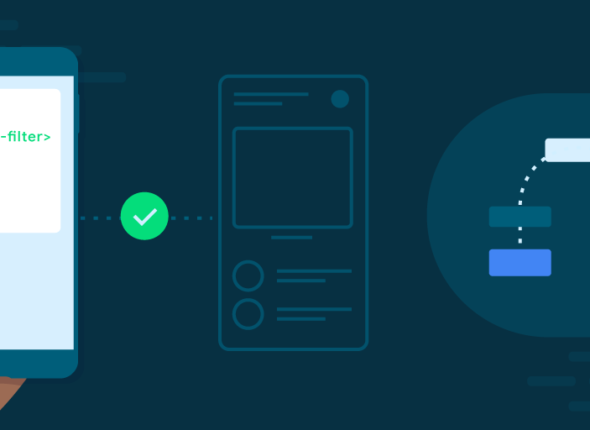In software development, testing is a crucial process that ensures the product is functional, stable, and meets user expectations. One of the earliest stages of testing is Alpha Testing, where developers and internal teams evaluate the software before it is released for external testing. By identifying bugs and performance issues early, alpha testing helps prevent costly problems later in the development cycle.
This guide explores alpha testing in depth, including its importance, process, challenges, and best practices, along with a clear comparison to beta testing.
What is Alpha Testing?
Alpha testing is an internal testing phase performed in a controlled environment by developers, QA engineers, and sometimes internal users. It is the first step toward evaluating a product’s overall functionality, stability, and usability before it reaches a larger audience. During alpha testing, the software is often incomplete, with certain features either in development or unstable, yet it undergoes rigorous testing for the core features that define the product.
Why Alpha Testing Matters
Alpha testing is an essential step in ensuring that the software meets a minimum standard of quality. It acts as a safety net, preventing poorly functioning products from reaching end-users. Key benefits of alpha testing include:
- Early Detection of Critical Bugs: The sooner issues are discovered, the cheaper and easier they are to fix.
- Improved Software Quality: By testing core functionalities early, developers can ensure that the software performs as expected in real-world scenarios.
- Cost-Efficiency: Resolving bugs and performance issues during alpha testing can save significant time and money by avoiding last-minute fixes during the final stages of development.
- Set Up for Successful Beta Testing: After alpha testing, the product is usually more stable, leading to a more successful and smoother beta testing phase.

The Alpha Testing Process: Step-by-Step
Alpha testing consists of multiple phases, focusing on ensuring that core features work as expected and identifying major issues.
1. Internal Developer Testing
- Purpose: Performed by the development team to catch bugs during early development.
- Methods: Developers perform unit testing, code reviews, and initial testing on core features.
- Focus: Debugging and ensuring individual components work properly before moving on to integration testing.
2. QA Testing
- Purpose: After developers test the software, QA engineers conduct more in-depth tests.
- Methods: Tests include smoke testing, regression testing, and performance testing.
- Focus: QA teams aim to ensure that critical functions are operational and that new changes do not introduce new issues.
3. Internal User Testing
- Purpose: Involves a small group of internal users (often employees who are not developers) to simulate real-world use.
- Methods: Testers perform exploratory testing, usability testing, and compatibility testing.
- Focus: This phase simulates actual user interactions to uncover bugs that might not be caught by automated tests or controlled lab testing.
Types of Testing Conducted During Alpha Testing
- Functional Testing: Ensures that every feature of the software operates according to the specifications.
- UI/UX Testing: Checks the user interface for intuitiveness and ensures that users can navigate the software with ease.
- Compatibility Testing: Tests the software on various platforms, devices, and browsers to ensure cross-compatibility.
- Security Testing: Ensures data security measures are implemented correctly, protecting the software against potential breaches.
- Performance Testing: Assesses how the software performs under different conditions, such as high traffic or data load.


Common Challenges in Alpha Testing
While alpha testing is crucial, it is not without challenges. Here are some common hurdles faced during this phase:
- Incomplete Software: Alpha testing occurs when the software is not fully developed, meaning that certain features may not be functional or even available yet.
- Limited User Base: Since testing is done internally, the feedback might not be as diverse as what would be received from real-world users.
- Time-Consuming: Alpha testing can take a long time to complete, especially if significant bugs or performance issues are discovered.
- Bias: Internal testers may be biased, often overlooking usability problems that real users might encounter.
Best Practices for Effective Alpha Testing
To ensure that alpha testing delivers meaningful results, it’s important to follow these best practices:
- Develop a Clear Test Plan: Define the scope of the test, including which features are critical and need to be thoroughly evaluated.
- Use a Bug Tracking System: Implement bug-tracking tools like JIRA or Bugzilla to log issues and track their resolution.
- Focus on Core Features: Test the most critical and high-risk areas of the software first to avoid surprises later in the development process.
- Encourage Exploratory Testing: Allow testers to explore the software in unexpected ways. This often uncovers bugs that scripted tests might miss.
- Iterate Based on Feedback: Alpha testing is an iterative process. As bugs are identified and resolved, continue testing until the product reaches the required quality standards.
- Run Parallel Tests: Testing multiple features or areas of the software simultaneously can help speed up the process.
Alpha Testing vs. Beta Testing: Key Differences

Many people confuse alpha testing with beta testing, but they serve different purposes and are conducted at different stages of development. Here’s a comparison:
| Aspect | Alpha Testing | Beta Testing |
|---|---|---|
| Conducted By | Internal team, including developers and QA engineers | External users or a small subset of real users |
| Testing Environment | Controlled, internal environment | Real-world environment |
| Focus | Finding bugs, testing core functionality, fixing issues | Gathering user feedback, usability testing, identifying edge cases |
| Purpose | Ensures that the product is stable for broader testing | Final testing before a public launch |
| Duration | Weeks to months | Typically shorter, ranging from a few days to a few weeks |
Conclusion: The Importance of Alpha Testing in Software Development
Alpha testing is an essential step in delivering high-quality software that meets user expectations. By uncovering and fixing bugs, performance issues, and usability problems early in the development cycle, developers can ensure a more stable and user-friendly product. While time-consuming, the insights gained from alpha testing pave the way for smoother beta testing and, ultimately, a successful product launch.
By following best practices, such as developing a clear test plan and using bug tracking systems, developers can make the most of this crucial phase and produce software that is stable, reliable, and ready for the real world.
Alpha testing ensures your product is on the right path to success, minimizing risks, reducing costs, and laying the foundation for an exceptional user experience.

Tips for Reducing App Load Time and Memory Usage
In today’s fast-paced digital world, users expect mobile apps to perform flawlessly, load quickly, and...
- October 17, 2024
- Com 0




